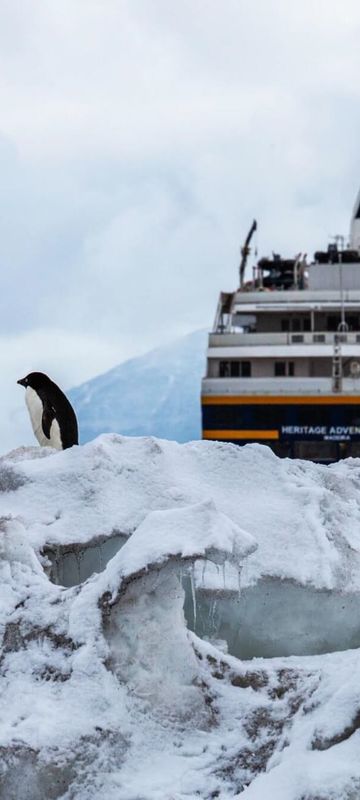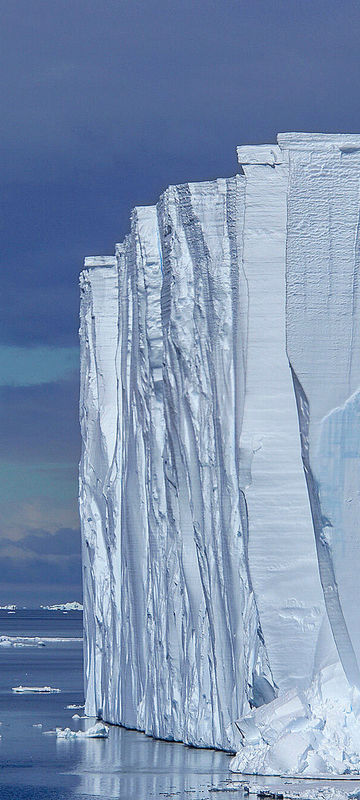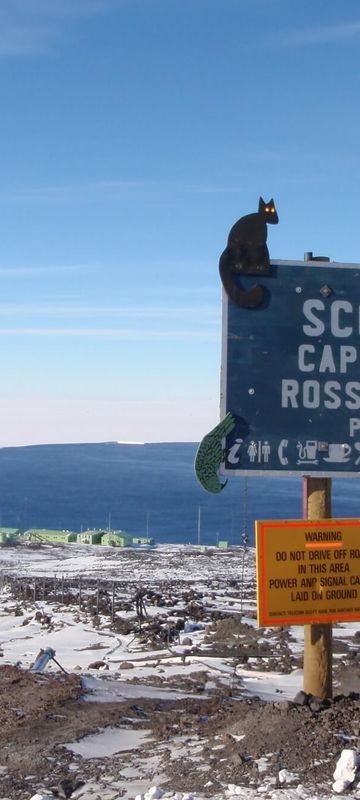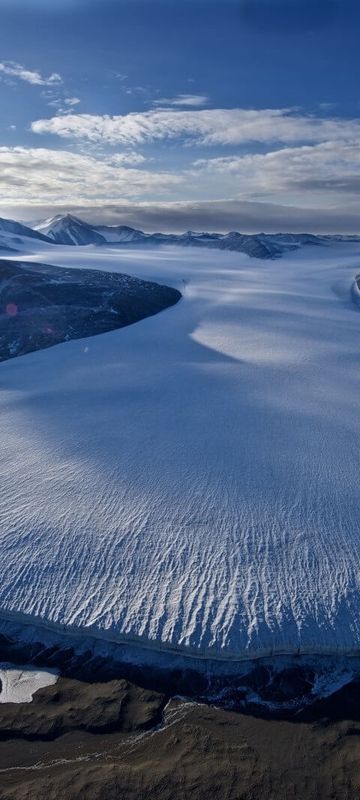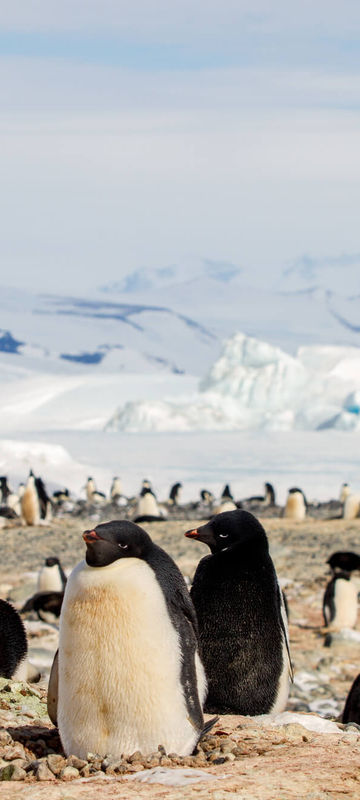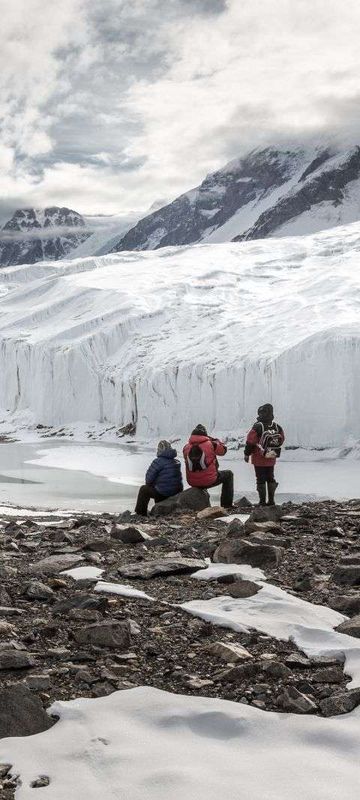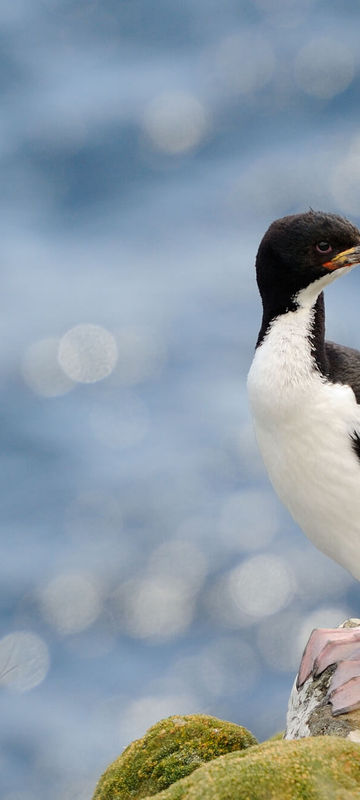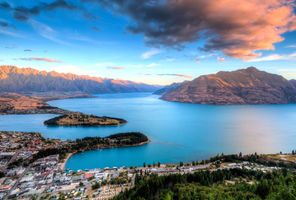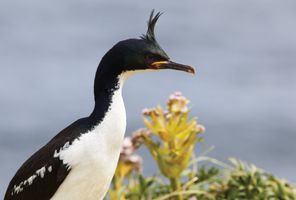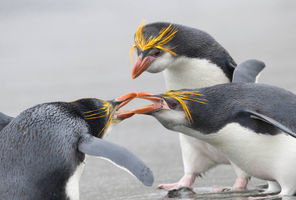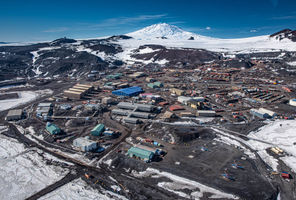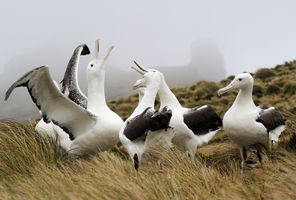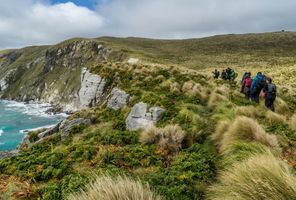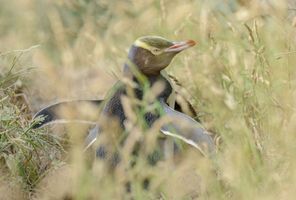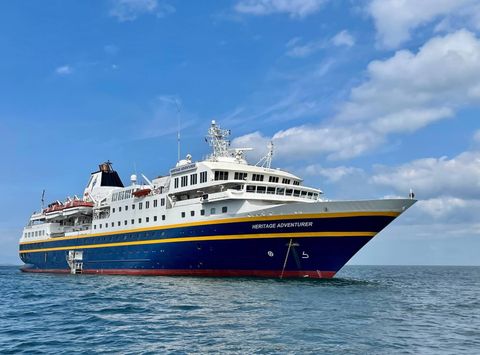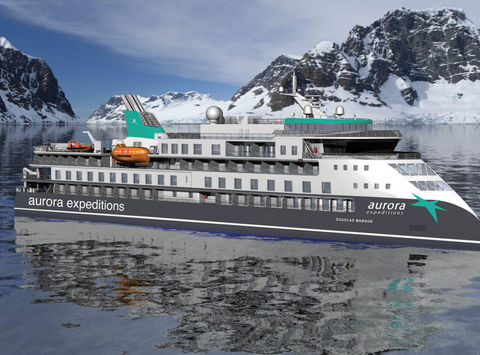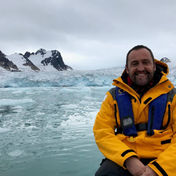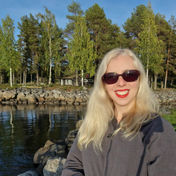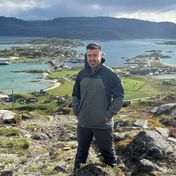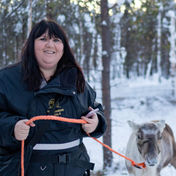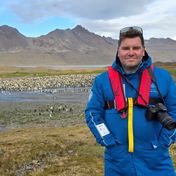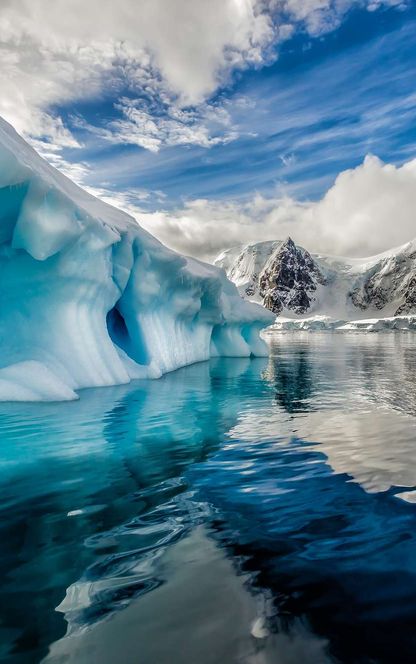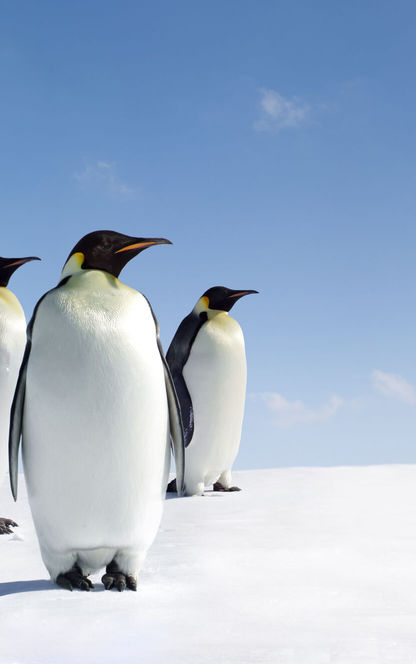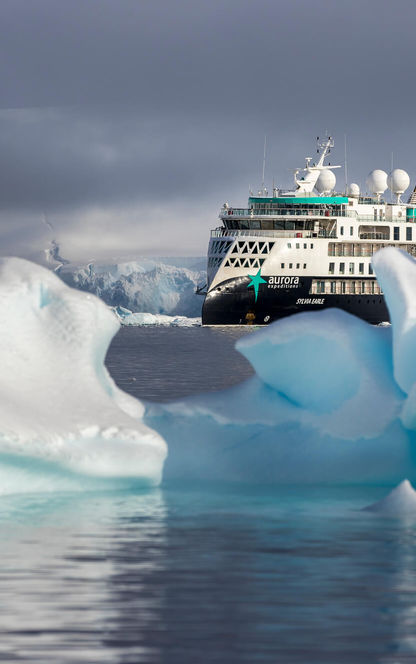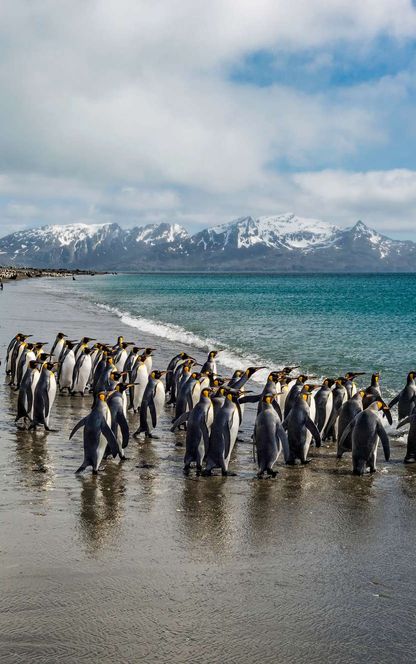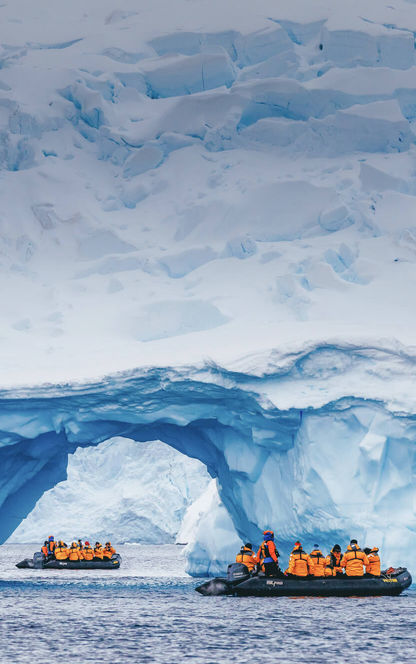One of the most remote places on earth, the Ross Sea is rich in distinct wildlife, dramatic scenery and legendary stories of the expedition heroes of the past. As the gateway to the South Pole, this voyage includes visits to the huts of the famous explorers, Borchgrevink, Scott and Shackleton, as well as various international scientific bases.
In addition to the countless penguin rookeries you will encounter, there are also opportunities to catch a glimpse of the elusive emperor penguin. This voyage also includes time on the sub-Antarctic islands of The Snares, Auckland Islands and Campbell Island, all perfectly primed to provide numerous sightings of endemic flora and fauna.
Itinerary
All voyage itineraries are intended as a guideline only – embracing the unexpected is part of the legacy of expedition travel. Actual routes and landings will be dependent on weather, sea and ice conditions. A degree of flexibility is essential in the polar regions!
The below sample itinerary is based on the 28-day voyage on the Heritage Adventurer. Other departures may vary in duration and routing, i.e. alternative embarkation or disembarkation ports, or do not include the pre-voyage hotel night. Please contact us for specific details.
Begin your journey to the Ross Sea with an overnight stay in New Zealand’s famous resort town of Queenstown. A pre-voyage briefing will be held at your hotel this evening.
This afternoon you will transfer to Bluff, located in New Zealand’s far south, before embarking ship and setting sail.
The closest sub-Antarctic Islands to New Zealand, The Snares comprise two uninhabited and highly protected islands. North East Island is the largest of The Snares and is home to endemic birdlife including Snares crested penguins, Snares Island tomtit, sooty shearwaters, fernbirds and Antarctic terns.
The northern most island in the Auckland Islands archipelago, Enderby Island is also one of its most beautiful and easily accessible. An outstanding wildlife and birding location, the island was cleared of all non-endemic wildlife in 1994, resulting with the successful recovery of its native bird and vegetation species. Possible landing sites here include Sandy Bay, one of three breeding areas for the Hooker’s or New Zealand sea lion, a rare member of the seal family.
Plot a course for Macquarie Island. Along the way, your Expedition Team will provide lectures and presentations about some of the landscapes, wildlife and legends that will feature in the days to come. Out on deck, keep watch for numerous and varied albatross and petrel species.
Macquarie Island is a Tasmanian State Reserve that in 1997 became a World Heritage Site. The Australian Antarctic Division has its permanent base on this island at Buckles Bay, which Australian sealer Frederick Hasselborough discovered while searching for new sealing grounds. The island supports one of the highest concentrations of wildlife in the Southern Ocean. Vast colonies of king, gentoo, and southern rockhopper penguins – as well as almost one million breeding pairs of the endemic royal penguin can be found on the island. Elephant seals and various fur seal species, such as the New Zealand fur seal, are also present.
Continue across the expanse of the Southern Ocean. On-board lectures will concentrate on Antarctica and the Ross Sea region. Your guides will also be paying close attention to the water temperatures, so that they can inform you when you cross over the Antarctic Convergence.
Explore the highlights of the Ross Sea. Many factors play a role in shaping the expedition’s itinerary here, including sea, ice and weather conditions. Each day will be different, but your Expedition Team will be on hand throughout to entertain and educate you about this fascinating part of the world. There will be plenty of opportunities to explore local bays, visit penguin rookeries, scout for humpback and minke whales, and search for a number of southern seal species.
Possible landing sites here include Cape Adare, which is where people, for the very first time, wintered on the Antarctic continent. The hut where the Norwegian Borchgrevink stayed in back in 1899 is surrounded by the largest colony of Adélie penguins in the world. Sailing south along the west coast of the Ross Sea, you may attempt a landing at the protected area of Cape Hallett to visit its large Adélie penguin rookery. Franklin Island and the Possession Islands are also both home to sizable Adélie penguin rookeries. Perhaps visit Ross Island, a huge expanse of highly elevated terrain situated at the base of the Ross Sea and guarded by looming Mount Erebus, Mount Terror and Mount Byrd. You may also visit the US-station McMurdo and New Zealand’s Scott Base. From McMurdo Station it is sometimes possible to take a substantial 10 km hike to Castle Rock where you will have a great view across the Ross Ice Shelf toward the South Pole.
As you approach the Ross Ice Shelf, be sure to sit out on deck and observe the awesome spectacle of this vast mass of land-ice, with a front 30 metres high. In the Bay of Whales at the eastern side of the shelf, close to Roosevelt Island (named by the American aviator Richard E. Byrd in 1934 for President Franklin D. Roosevelt), Roald Amundsen set off on his expedition to the South Pole, where he finally arrived on 14 December 1911.
The ship will work its way through the sea-ice at the entrance of the Ross Sea and start the long journey north through the Southern Ocean.
Visit the sub-Antarctic New Zealand Reserve and UNESCO World Heritage Site of Campbell Island, with its abundance of luxuriant, blooming vegetation. The island is home to a large and easily accessible colony of southern royal albatross on the main island and breeding wandering, Campbell, grey-headed, black-browed, and lightmantled albatross on the satellite islands. Three penguin species – eastern rockhopper, erect-crested and yellow-eyed – also breed here. In the 18th century seals were hunted to extinction, but since their re-introduction, populations of elephant seals, fur seals and sea lions have recovered.
At sea en-route to Bluff, New Zealand
Arrive in Bluff where you depart for your homebound journey.
Prices
What's Included
-
One night pre-expedition hotel accommodation with ship transfer
-
Shipboard accommodation
-
All breakfasts, lunches & dinners on board
-
Tea & coffee available around the clock
-
Select alcoholic drinks included with lunch and dinner
-
All Zodiac transfers, cruising & shore landings
-
Presentations by the Expedition Team and guest speakers
-
Loan of rubber boots during voyage
-
All miscellaneous service taxes and port charges
-
24 hour emergency assistance from our team during your holiday
-
No surcharge guarantee
-
Full financial protection
From £24995 Excluding Flights
27 Nights
Jan-Feb
One night pre-expedition hotel in Queenstown is included with voyages aboard Heritage Adventurer
One night pre-expedition hotel in Dunedin is included with voyages aboard Douglas Mawson
Make this trip yours
Every trip you see here can be adapted to suit you using inside-out knowledge to create one-off experiences created just for you.

Jo
Small ship cruises
Species of whales & dolphins seen
2025/26 Departures & price guide
Prices are per person, based on a twin cabin. They do not reflect any applicable special offers or discounts. Single, triple and quad cabins are also available. Please get in touch for a tailored quote based on the best available price for your preferred voyage and cabin type.

We create holidays that are as individual as you are. And we’ve been doing it for 40 years, crafting each and every holiday using our in-depth knowledge and enthusiasm for our destinations. Whatever your brief, we’ll create an amazing trip for you to get excited about. That might mean adapting one of our existing itineraries or we’ll build you one from scratch.
























